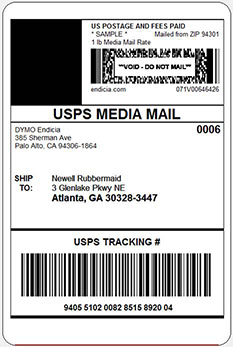Understanding the Media Mail classification

So, what is Media Mail?
The Postal Service created Media Mail back in 1938 as a less expensive way to mail books – it was originally designed to encourage the flow of educational materials through the mail. Over the years, as technology developed, and the means of distributing information changed, the Media Mail classification has been revised to include materials such as films and computer media.
While Media Mail takes a little longer than First-Class Mail to arrive at its destination, it is offered at a much lower rate – making it a very attractive option. But, because the prices are so low, the Postal Service has instituted strict restrictions on what does and does not qualify as Media Mail.
And, keep in mind that the U.S. Postal Service has the right to inspect all items that are sent through the Media Mail classification. Anyone who sends a non-approved item through Media Mail runs the risk of being charged with mail fraud!
What qualifies as Media Mail?
Media Mail consists of the following:
- Bound books containing at least 8 pages and NO advertising*
- Printed educational material used for testing
- Printed educational reference charts designed to instruct or train individuals (i.e.: periodic table of elements, botanical or zoological tables, or tables of mathematical or scientific equations)
- see below for restrictions
- Printed sheet music – either bound or in sheet form
- Manuscripts
- Computer readable media including DVDs, CDs, video tapes
- see below for non-allowed computer readable media
- 16-mm or narrower film that is in final form for viewing
- Can include related catalogs of the films
- catalog must be at least 24 pages long with 22 of the pages being printed
- Can include related catalogs of the films
- sound recordings include video recordings and player piano rolls
What is not considered Media Mail?
- Periodicals such as magazines and newspapers
- Photographs, photo albums and pictures
- Printed education reference charts that contain mostly text (even if it includes graphs, diagrams or tables)
- Computer readable media including portable hard drives, thumb drives, flash drives, jump-drives, and USB drives
- Films and film catalogs sent to or from commercial theaters
- Trading cards of any type (i.e.: baseball cards)
- Electronic equipment such as computers, stereos and CD players
- Clothing or other merchandise
- Video games
- Binders
- with the exception of those containing loose-leaf pages of medical information to be distributed to doctors, hospitals, medical schools and medical students
*Notes:
- Advertising refers to paid advertising and the publishers’ own advertising in display, classified or editorial style.
- Books shipped as Media Mail may contain:
- either one envelope or one postcard that is bound into the book
- one order form that is bound into the pages of books (in addition to the one envelope or postcard)
- announcements that include ordering instructions. The announcements must be about books and not contain any advertising
For more information on Media Mail, visit the USPS website at http://pe.usps.com/text/dmm300/173.htm
Back to Fall 2012 Newsletter »
